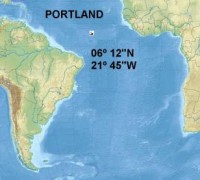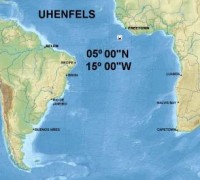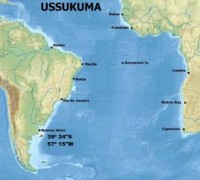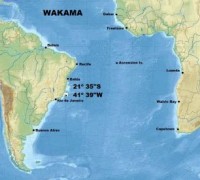- BLOCKADEBRECHER
19)RIO GRANDE (SCUTTLED)*
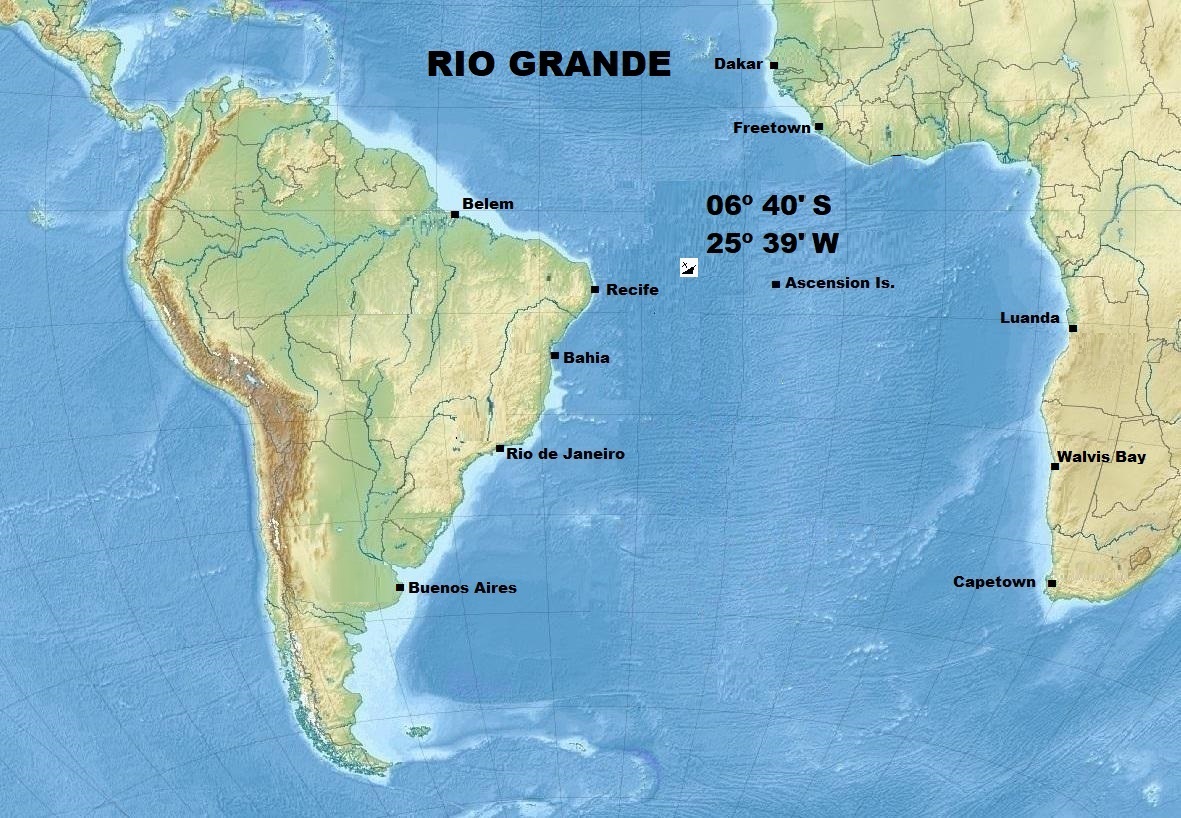
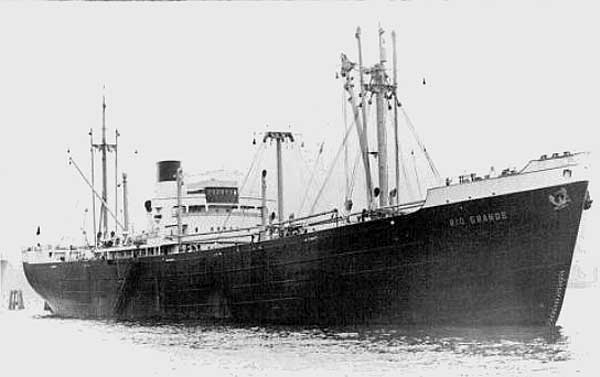
Length 476,0 ft.
Beam 61,4 ft.
Draught 23,0 ft.
Cargo: 500 tons of Tin, 2370 tons of Copper, crude rubber in bales of 245 kilograms each, and 311 tons of cobalt.
Sunk: 4 JAN 44 by USS Cruiser Omaha and Destroyer Jouett on position 06º 40’S 25º 39’W.
1 Dead
94 POW
On 4th Jan. 1944, Task Group 41.1 consisting of Omaha and Jouett with Rear Admiral Oliver Read in command sank a second blockade runner, later determined to be the Rio Grande. The group had departed Recife on 2 January on an ocean patrol with the primary mission being support of the barrier sweep between Natal and Ascension Island. By the 4th, the two ships were operating in the vicinity of 06º 11"S, 25º 57"W, conducting an air search with Omaha's planes. At 10:25, the Omaha sighted a ship almost dead ahead on her port bow, about twenty miles distant. At about the same time, the planes sighted the contact; whereupon the Omaha directed one to investigate the contact and the other to go on with routine patrol.
Thirteen minutes later, Omaha and Jouett proceeeded at 20 knots to intercept the runner. While the two ships were reducing the range, the vessel started to send a message. Very little of this could be made out, because Omaha jammed it on 500 kcs (khz) in accordance with doctrine. Meanwhile, the blockade runner was not displaying her flag of nationality, not her flag hoist call sign. She offered no identification when challenged. By 11:07, with the range to hernow about 20,000 yards, it was possible to see smoke aft on the ship. Also, the Omaha aircraft reported that explosions had occurred aft and amidships, and that the crew had abandoned ship in lifeboats.
The task group opened fire for the purpose of forcing the boats back to the ship, then began firing at the target itself. At 11:14, Omaha and Jouett ceased firing on orders from Read. When it became apparent that the boats had no intention of returning to the ship, they reopened at a range of 7,600 yards and continued until the target sank, from a combination of gunfire and demolition charges set by the crew before abandoning ship. As Omaha and Jouett cleared the area at high speed, they passed four lifeboats containing the runner's crew; an estimated fifty men. In one boat there appeared to be officers in white uniforms.
The group made no attempt to recover the survivors. The following day, 5 January, the two ships passed through a large oil slick, near the area of one sinking, presumably from the runner. It had a distinct odor of vegetable oil. Jouett was ordered to collect various items of cargo still afloat and did so. The most import was crude rubber, in bales of 245 kilograms, with French Indochina markings. From observationsof the ship's characteristics the previous day, it was believed that the sunken ship could be the Rio Grande, if she had been northbound, or the Elsa Essberger, if southbound. The nature of the cargo found definitely, established the runner as the Rio Grande northbound from the Orient.
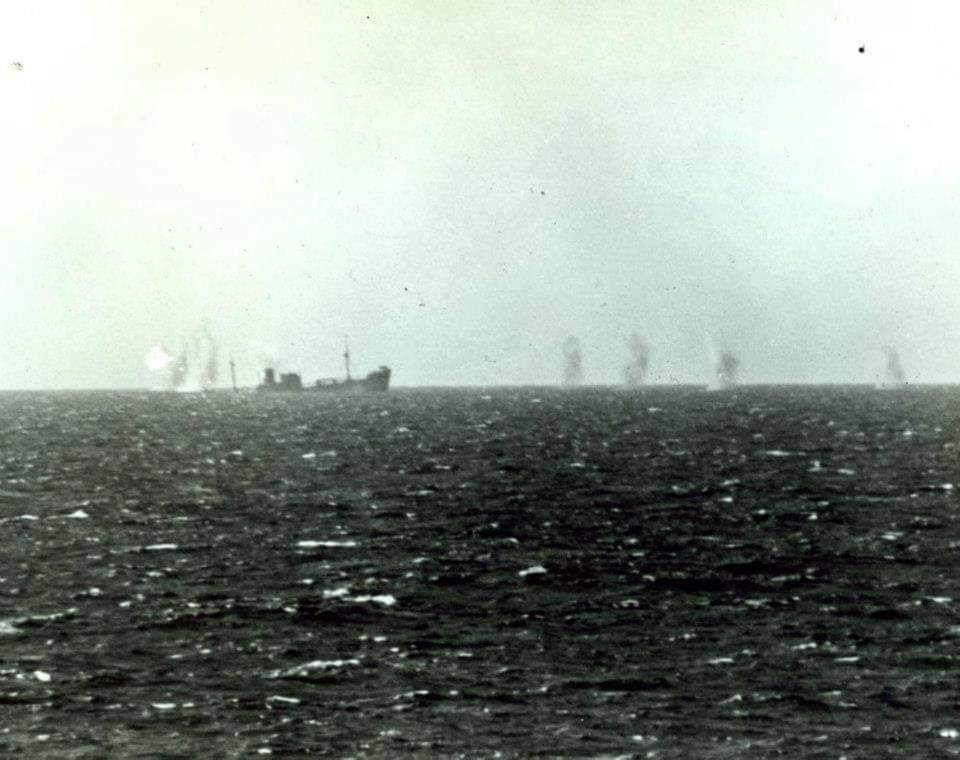
Picture above shows SS Rio Grande beginning to sink by stern after receiving several hits from US Cruiser Omaha and Destroyer Jouett both headquartered at Recife. Photo Naval History & Heritage command 530622_10151097072723344_1500329345_n.jpg (960×760) (fbcdn.net)
The survivors were located by one Navy Blimp and USS Cruiser Marblehead rescued 72 survivors on position 07º 45’S 33º 00”W. Later on 11/Jan 22 survivors landed near Fortaleza and were taken into custody by 10th Brazilian Military region.
The wreckage lies at a depth of 5,762 metres, and was discovered on November 28 1996 using side-scanning sonar technology. Two days later the company responsible for the find, Blue Water Recoveries, confirmed the wreck using a remotely operated vehicle.
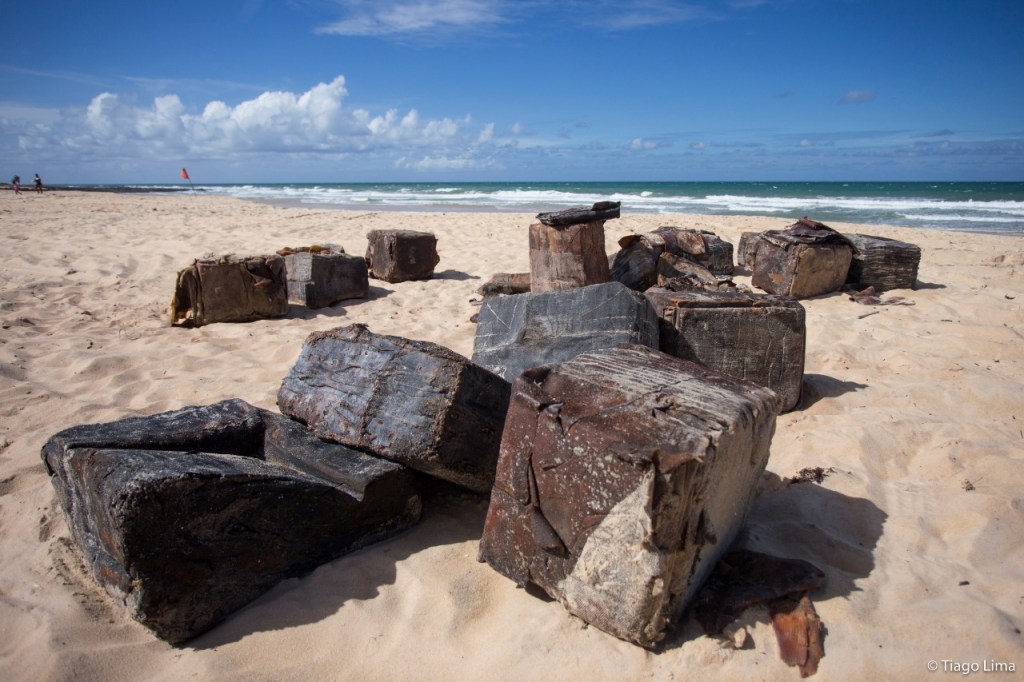
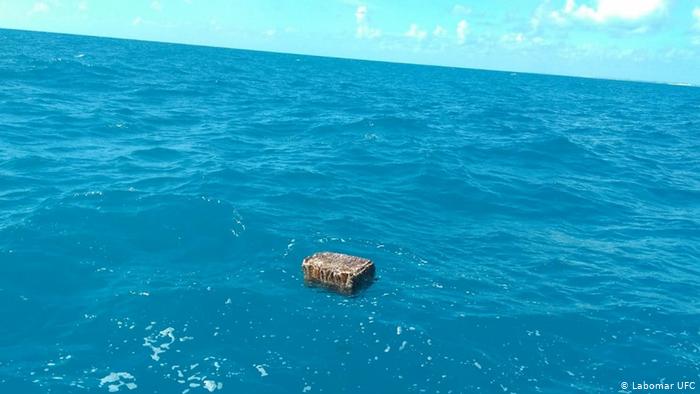
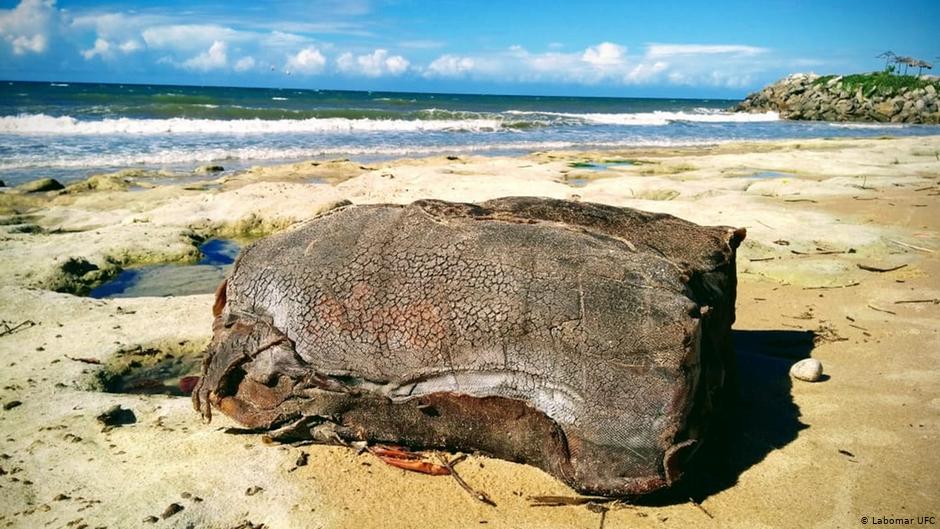
74 years upon the sinking of Rio Grande and the remnants of the precious cargo of rubber SS Rio Grande carried on her decks washed up at several points of northeastern Brazilian coast. Hundrded of these packs were collected. Photo https://www.saibamais.jor.br/ong-oceanica-alerta-para-material-toxico-encontrado-nas-praias-do-rn/
https://www.youtube.com/watch?v=pcaLUvUlI4g
On the archival footage above, fishermen collect Nazi rubber from a sea in Fortaleza, Brazil. The native fishermen on boats. They collect German rubber bales of Nazi blockade runners sunk during a war from the sea. The fishermen load the rubber sacks in a vehicle. The rubber sacks are then rolled inside a building.
By Critical Past Clip 65675067065
